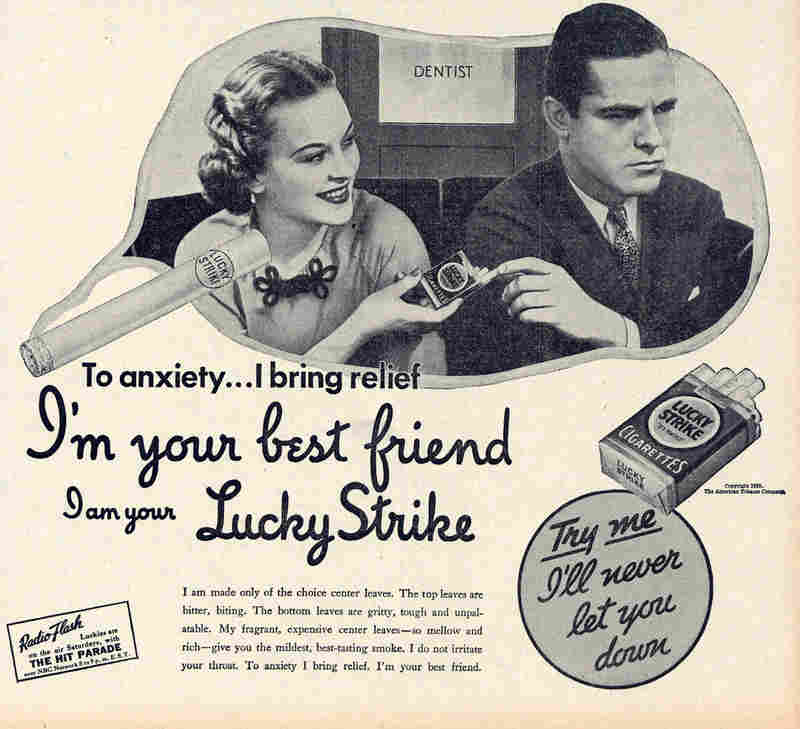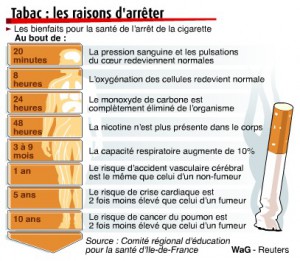
CONCLUSION et REFERENCES
FINALEMENT, COMMENT EVALUER L’EFFICACITE REELLE D’UN TRAITEMENT DES DEPENDANCES ?
L’objectif primordial du traitement des dépendances ne se réduit pas à permettre l’arrêt de la consommation problématique. Un simple tour de « passe-passe », effectué au bon moment, sur la bonne personne (tout individu suffisamment motivé par l’arrêt du tabac, bien souvent disposé à débourser une somme conséquente pour bénéficier de l’effet miracle) suffit bien souvent à l’obtenir :
–« C’est incroyable, j’ai arrêté du jour au lendemain…. Comme quoi, ça marche… »
-« Hein ? Pourquoi je m’allume une cigarette ? Parce que, maintenant, je sais que je peux m’arrêter quand je veux grâce à mon homéo-magnéto-hypnotiseur… Je m’autorise donc à reprendre, temporairement, après mes 2 semaines d’arrêt…»
L’objectif, le seul, le vrai, c’est le maintien de l’abstinence totale sur le long terme !!
Et là, c’est une autre affaire… pourtant, peut-être à portée de main, pour l’addiction à la nicotine…
Alors, sollicitons des spécialistes reconnus (les maladies de peau sont du ressort de la dermatologie, les dépendances de celui des addictologues !)
Militons pour le remboursement des patchs, moyennant une prescription et un suivi médical strict. Notre système de santé rembourse toujours 30% des célèbres granules d’eau sucrée, qui n’ont jamais fait preuve de bénéfice sur la Santé Publique… Mais ça, c’est une autre histoire …
Alors ? Si on arrêtait de nous enfumer ? 😉
Sources :
1/Nicotine Replacement Therapy for Smoking Cessation or Reduction: A Review of the Clinical Evidence.
Ottawa (ON): Canadian Agency for Drugs and Technologies in Health; 2014 Jan.
2/Front Med. 2014 Mar;8(1):84-90
Nicotine gum or patch treatment for smoking cessation and smoking reduction: a multi-centre study in Chinese physicians.
Xiao D, Zhong N, Bai C, Xiu Q, Xie C, Hu D, Mao Y, Perfekt R, Kruse E, Li Q, Liu JJ, Wang C.
3/Nicotine Tob Res. 2013 Jun;15(6):1003-13
Nicotine reduction: strategic research plan.
Hatsukami DK, Benowitz NL, Donny E, Henningfield J, Zeller M.
4/Drug Alcohol Depend. 2012 Dec 1;126(3):354-61.
Assessing the association between the use of NRT for smoking reduction and attempts to quit smoking using propensity score matching.
Beard E, Aveyard P, Brown J, West R.
5/Addiction. 2011 Jan;106(1):197-204.
Use of nicotine replacement therapy for smoking reduction and during enforced temporary abstinence: a national survey of English smokers.
Beard E, McNeill A, Aveyard P, Fidler J, Michie S, West R.
6/Eur Arch Psychiatry Clin Neurosci. 2013 Feb;263(1):75-82.
A double-blind randomized clinical trial of different doses of transdermal nicotine patch for smoking reduction and cessation in long-term hospitalized schizophrenic patients.
7/Nicotine Tob Res. 2004 Dec;6 Suppl 3:S303-10.
Stop-smoking medications: who uses them, who misuses them, and who is misinformed about them?
Bansal MA, Cummings KM, Hyland A, Giovino GA.
8/Nicotine Tob Res. 2002;4 Suppl 2:S73-9.
Nicotine concentrations with concurrent use of cigarettes and nicotine replacement: a review.
9/Prev Med. 2000 Jun;30(6):504-12.
The use of nicotine patches with minimal intervention.
Jolicoeur D1, Ahluwalia JS, Richter KP, Mosier M, Harris KJ, Gibson C, Moranetz CA.
10/Tob Control. 1997 Winter;6(4):311-6.
Aiding reduction of smoking with nicotine replacement medications: hope for the recalcitrant smoker?
Fagerström KO, Tejding R, Westin A, Lunell E.
11/Psychopharmacology (Berl). 1994 Jun;115(1-2):9-14.
Transdermal nicotine: reduction of smoking with minimal abuse liability.
Pickworth WB, Bunker EB, Henningfield JE.
12/Psychopharmacology (Berl). 1992;106(3):421-7.
Effect of transdermal nicotine patches on cigarette smoking: a double blind crossover study.
Foulds J, Stapleton J, Feyerabend C, Vesey C, Jarvis M, Russell MA.
13/Cochrane Database Syst Rev. 2012 Nov 14;11:CD000146
Nicotine replacement therapy for smoking cessation.
Stead LF, Perera R, Bullen C, Mant D, Hartmann-Boyce J, Cahill K, Lancaster T.
14/Cochrane Database Syst Rev. 2013 May 31;5:CD009329
Pharmacological interventions for smoking cessation: an overview and network meta-analysis.
Cahill K, Stevens S, Perera R, Lancaster T.
15/Cochrane Database Syst Rev. 2010 Oct 6;(10):CD001008.
Hypnotherapy for smoking cessation.
Barnes J, Dong CY, McRobbie H, Walker N, Mehta M, Stead LF.
16/Cochrane Database Syst Rev. 2014 Jan 23;1:CD000009.
Acupuncture and related interventions for smoking cessation.
White AR, Rampes H, Liu JP, Stead LF, Campbell J.
17/Cochrane Database Syst Rev. 2014 Jan 8;1:CD000031.
- Antidepressants for smoking cessation.
Hughes JR, Stead LF, Hartmann-Boyce J, Cahill K, Lancaster T.
18/Cochrane Database Syst Rev. 2012 Dec 12;12:CD009670.
Behavioural interventions as adjuncts to pharmacotherapy for smoking cessation.
19/Cochrane Database Syst Rev. 2012 Apr 18;4:CD006103.
Nicotine receptor partial agonists for smoking cessation.
Cahill K, Stead LF, Lancaster T.
20/Circulation. 2014 Jan 7;129(1):28-41.
Cardiovascular events associated with smoking cessation pharmacotherapies: a network meta-analysis.
Mills EJ, Thorlund K, Eapen S, Wu P, Prochaska JJ.
21/ Rev Prescrire 2015 ; 35 (381) : 513-514
Effets indésirables cardiaques des substituts nicotiniques
22/ Rev Prescrire 2015 ; 35 (377) : 204-210
Femmes enceintes : choisir un moyen de sevrage du tabac

